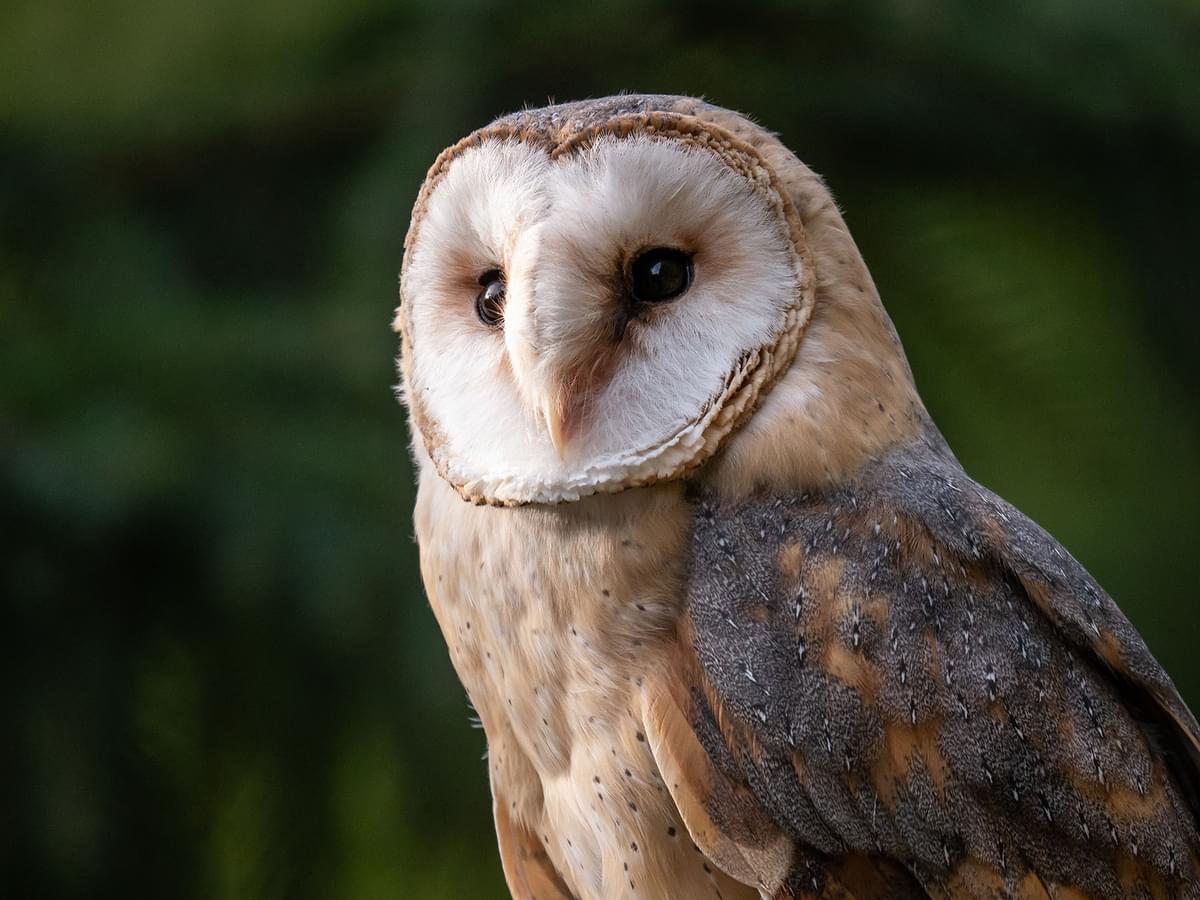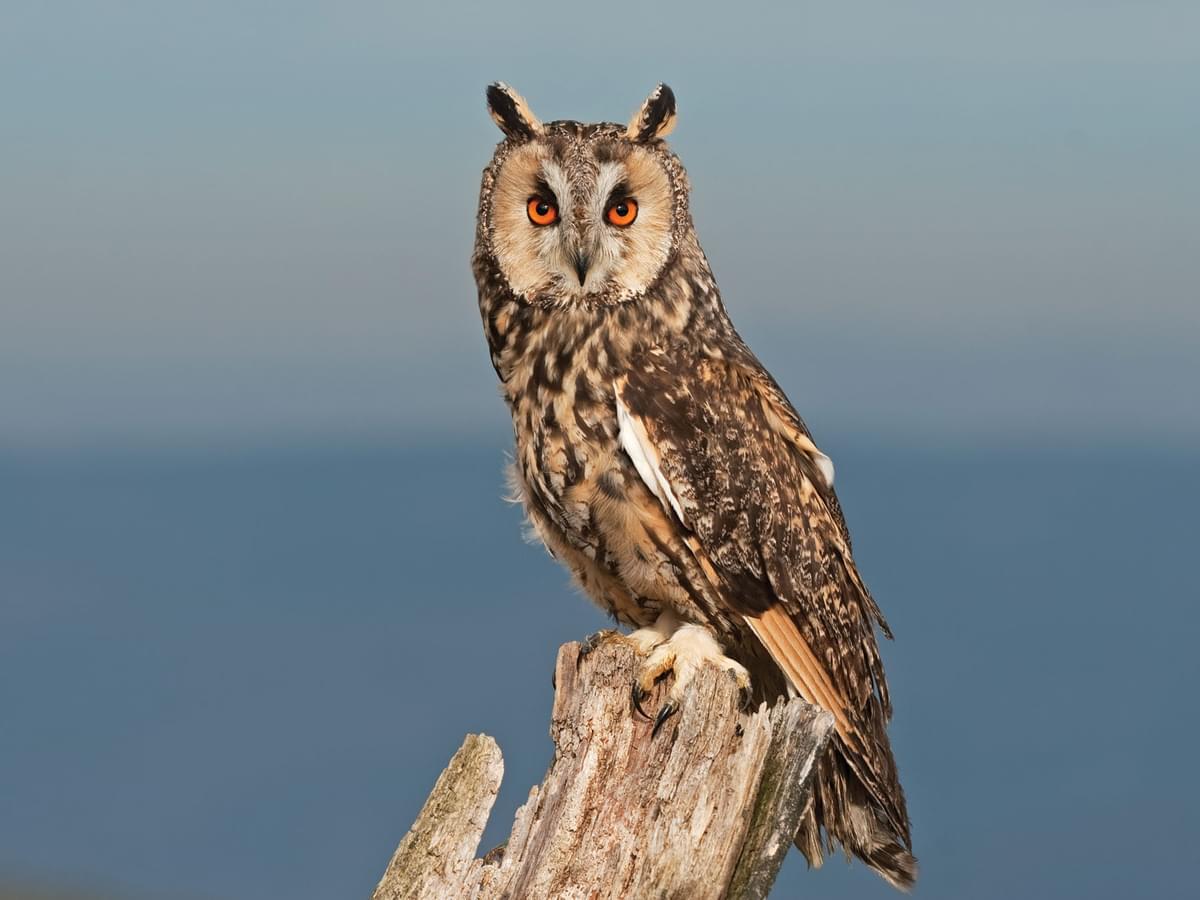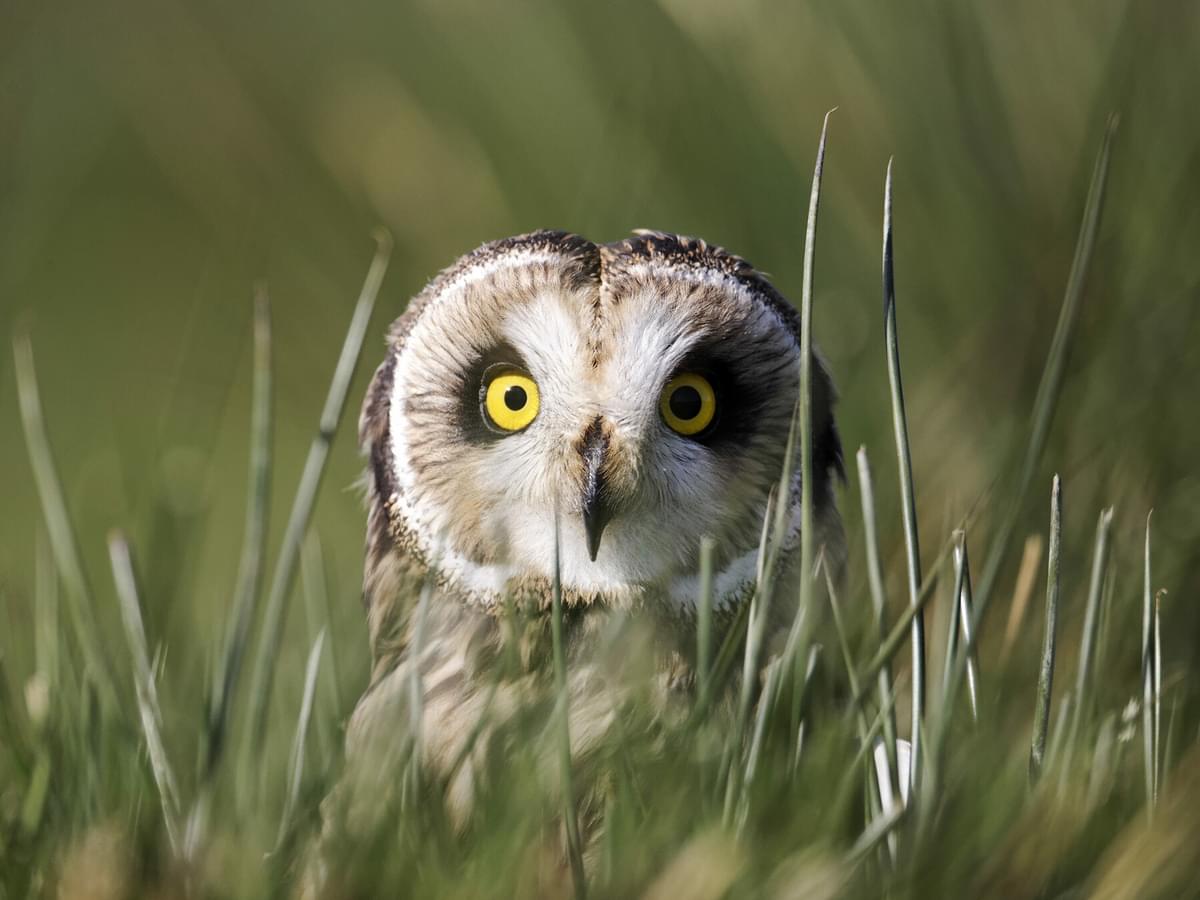The natural habitat of the Peach State is more than just juicy fruits, urban environments, and weeping willows. Instead, Georgia is ripe with hardwood forests across most of the northern sections of the state. To the south, various wetland types, including forested, deciduous, evergreen, and shrub exist. These wetlands deliver a critical habitat to most of the flora and fauna in South Georgia. The five habitat regions of Georgia include the mountains, piedmont, coast, wetlands, and coastal plain. With this habitat diversity, countless birds call Georgia home, including various owl species. Therefore, it is important to understand, what owls can be found in Georgia?
The nine owl species that grace the trees of Georgia include the Barn Owl, Barred Owl, Burrowing Owl, Eastern Screech-Owl, Great Horned Owl, Long-eared Owl, Northern Saw-whet Owl, Short-eared Owl, and Snowy Owl. While many of these owls are part-time, seasonal residents, others are permanent citizens of the Georgian wildlife community.
Keep reading to learn more about the lives of these nine owl species!
Did you know?
The list of owls below has been compiled from historical sighting reports from various sources. Whilst some of the birds listed are uncommon and hard to spot, we've still included them as they are sometimes seen still in Georgia.
Barn Owl
Tyto alba

Length
33-39cm
Wingspan
80-95cm
Weight
430-620g
Barn Owl
Barn Owls are certainly a remarkable sight with their white faces, buff underbelly and breast coloration, short tails with a gray mixture, rounded wings, and beautiful brown and grey backs. Their faces are incredibly distinct because they form a hear-shape, and since this species does not have ear tufts, their head has a smooth appearance. Barn Owls also feature pinkish-gray medium-length bills.
As the name suggests, Barn Owls enjoy nesting in manmade structures like barns but hunt in open areas like marshes and fields. This species primarily dines on other avian and small mammals like rabbits, rodents, and mice. Since they hunt at night, they prefer night creatures, so squirrels and chipmunks are typically safe from this owl.
You can observe the Barn Owl in northern and southern Georgia year-round.
Eastern Screech-Owl
Megascops asio
Length:
16cm to 25cm
Wingspan:
48cm to 61cm
Weight:
170g to 190g
Seen :
All year
Eastern Screech-Owl
The Eastern Screech Owl loves trees and blends in with the leaves due to their complicated plumage. You can find this owl year-round in all types of forests, especially when water is near.
The Eastern Screech-Owl enjoys eating earthworms, lizards, frogs, tadpoles, crayfish, and any other type of small mammal they can catch. This is because this owl is small and delightful to observe. With short and stout bodies, their feathers are a collection of spots with rusty-red or gray bands. Their wings are small and rounded and their tails are square. Facially, they feature a V-shape above the eyes and noticeable ear-tufts.
The Eastern Screech Owl is the most common in Georgia and the sharp yellow eyes of this bird are easier to spot than the owl itself.
Great Horned Owl
Bubo virginianus
Length:
46cm to 63cm
Wingspan:
140cm
Weight:
910g to 2.5kg
Seen :
All year
Great Horned Owl
As one of the most recognizable owls on the planet, the Great Horned Owl is what you picture when you think of an owl. This species is distinguished by its gray plumage, medium-length tail, rounded face with reddish coloration in a heart shape, “v” shaped eyebrows, and sharp bill. Also, you can spot a Great Horned Owl by their prominent ear tufts and the occasional red at the breast.
These large owls are apex predators across a range of habitats. While they prefer to live in deciduous or evergreen woodlands with clearings, you can find the Great Horned Owl in suburban environments, tundra, desert, or many other locations year-round.
As an expert hunter, this species eats animals larger than themselves, including other predatory birds. When not feeding on large prey, this owl snacks on mice, scorpions, and other smaller animals.
Snowy Owl
Bubo scandiacus
Length:
53cm to 66cm
Wingspan:
125cm to 166cm
Weight:
710g to 2.95kg
Seen :
Rare, but during winter
Snowy Owl
Snowy Owls are rare to find in Georgia, but your best shot is the limited window between December and the end of February. Due to their beautiful black and white plumage, they are easily recognizable. The whiter the bird, the more likely it is a male, whereas females feature a denser concentration of colors.
Featuring large, rounded wingtips and medium tails, their distinct yellow eyes set within a rounded and pure-white face creates an incredible contrast. This owl species features a small black bill.
If you are lucky enough to spot a Snowy Owl, it will be in coastal or freshwater regions, fields, or airports. This species is especially interested in hunting lemmings but will consume other rodents.
Burrowing Owl
Athene cunicularia
Length:
19cm to 25cm
Wingspan:
51cm to 61cm
Weight:
170g
Seen :
Mainly between October and April
Burrowing Owl
Spotted between October and April, the Burrowing Owl frequents prairies and large open areas with sparse plantations. As their name suggests, the Burrowing Owl lives in discarded ground squirrel dens. They dine on insects, mammals, and small reptiles located in their hunting area.
You can identify a Burrowing Owl by its mix of sandy-tan and white short tails, wings, and backs, along with their mottled brown feathers. Their bellies feature brown bards across mostly white, white eyebrows, and a white throat. With their distinctive yellow eyes, this species also features a yellow or grey, medium-length bill.
This owl species is one of the easiest to find in Georgia because they are not shy about standing still for extended periods or hopping around on the ground.
Barred Owl
Strix varia
Length:
43cm to 50cm
Wingspan:
31.5cm to 35.5cm
Weight:
470g to 1.05kg
Seen :
All year
Barred Owl
Barred Owls are completely barred in color with a mix of white and brown on their tails, wings, and backs. Their bellies tend to be a mix of white and brown vertical lines with their upper belly featuring brown horizontal lines. Their face looks like a figure-eight over the eyes and this species also doesn’t have ear tufts.
Barred Owls call deciduous woods and evergreen homes but can also be found in coniferous forests around the state. When not hunting their prey, these owls roost inside tree cavities. The Barred Owl loves variety in its dinner so it will eat reptiles, grouse, rabbits, and any small mammal available.
You will find these beautiful birds near the Coastal Plains of Georgia.
Long-eared Owl
Asio otus

Length
35-40cm
Wingspan
90-100cm
Weight
220-435g
Long-eared Owl
Long-eared Owls are true to their name and feature long ears with a catlike appearance. They are medium-sized and feature an extra-long ear tuft with an orangey face that gives the form of a surprised cat. This species is mostly silent throughout the year, so they maintain a low-key profile. However, during mating season, they become chatterboxes with a low “whoo’s” sound to attract a mate.
Long-eared Owls are uncommon to find in Georgia, but your best shot is mostly during the fall and winter. You can look for them in any part of the state except the southeastern region. The Long-eared Owl prefers open areas to nest, hunter, and roost in dense shrubs and trees.
They typically dine on small mammals and local rodents including voles, mice, rats, and gophers, but have been known to eat snakes, lizards, bats, shrews, and other small birds.
Short-eared Owl
Asio flammeus

Length
34-43cm
Wingspan
85-110cm
Weight
206-475g
Short-eared Owl
The Short-eared Owl is a stunning mix of white, buff, and brown spotted plumage across their backs, short tails, and rounded wings. Their wings will usually feature s single white patch which will help you identify them. Underwings have a comma-shaped marking near the bird’s wrist.
Facially, this species has yellow eyes that are outlined in black with a white center interrupted by tan and brown spots from their forehead throughout the face. These owls have tiny ear tufts and small black bills.
The best time to spot the Short-eared Owl is from November to April in grasslands, fields, and other open spaces where they hunt. The typical diet of this species is the occasional bird and small mammals, with younger owls will also eating insects.
Northern Saw-whet Owl
Aegolius acadicus
Length:
18cm to 21.5cm
Wingspan:
45cm to 60cm
Weight:
100g
Seen :
Between November and February, but fairly rare
Northern Saw-whet Owl
This adorable little owl has a large head that gives them a cartoon appearance. Their wings and backs are peppered with white, and their breast and stomachs feature spaced brown streaking with solid white lacing. Their heads are rounded without ear tufts and a figure 8 face consisting of white and tan that surrounds their piercing yellow eyes. The Northern Saw-wet Owl’s bill is short and black.
You can find this species mostly in forests but occasionally in large open areas where they are hunting for squirrels, deer mice, small birds, and insects.
While they are rare in Georgia, the best time to spot a Northern Saw-whet Owl is a short window between November and February.
